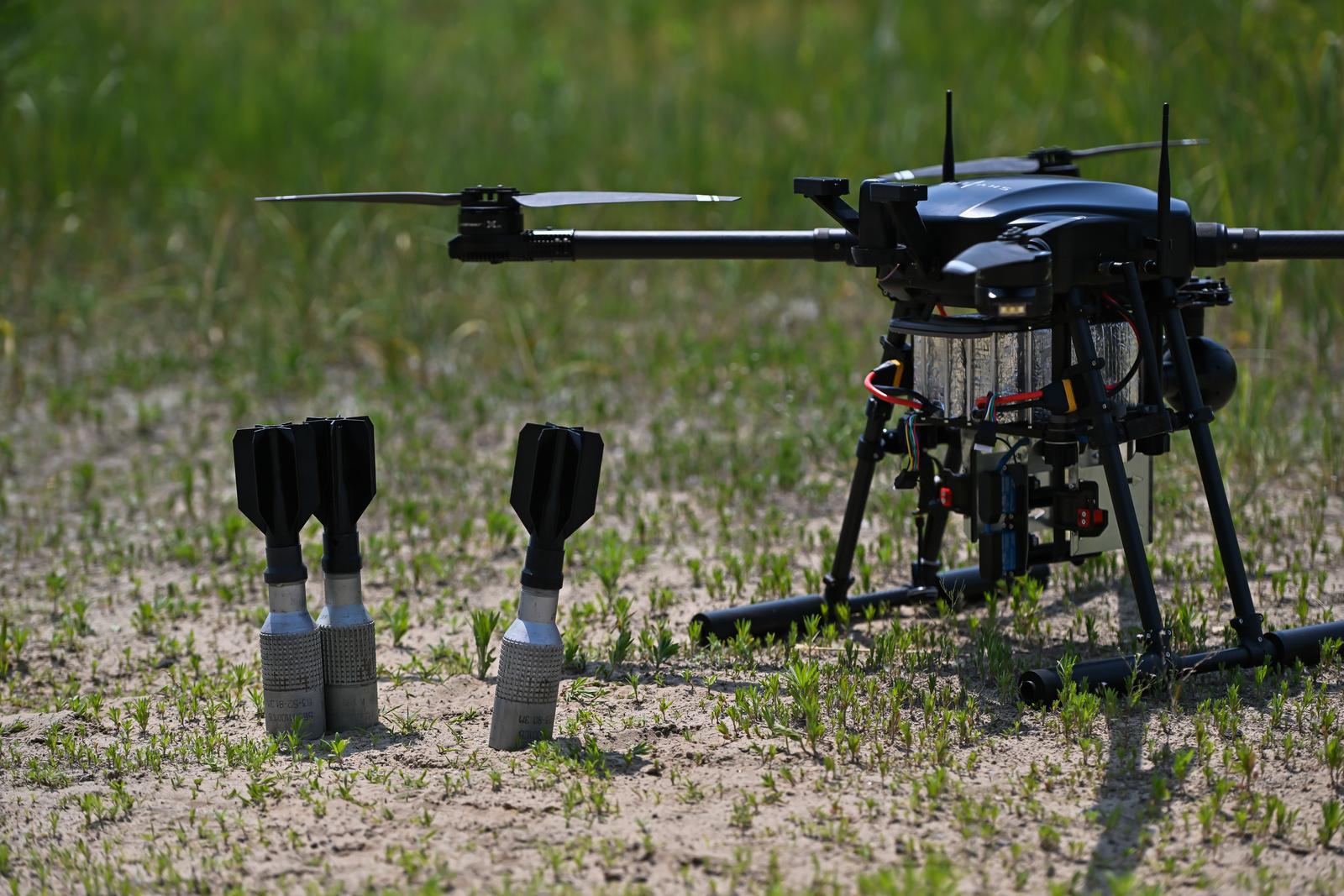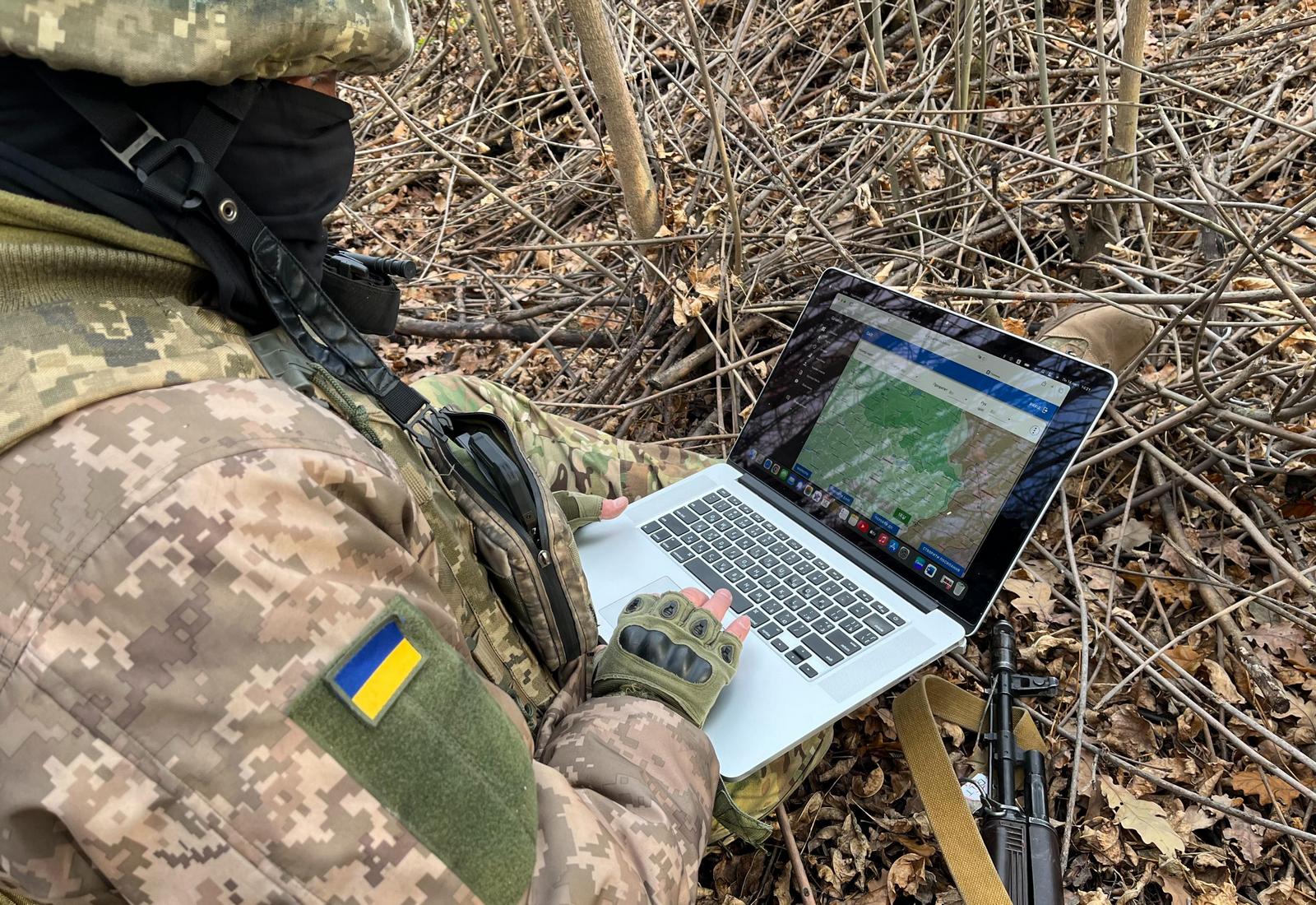In the skies, on the ground, and in the waters of Ukraine, a new era of warfare has emerged. It includes drone combats, psychological warfare, the adoption of advanced Western weapons, and precision strikes with underwater torpedoes.

Since the beginning of the full-scale war in 2022, Ukraine has experienced a surge in the military tech industry. In the first one-and-a-half months since the Brave1 defense technology development platform was launched, Ukrainian military technology companies have submitted over 250 projects, Ekonomichna Pravda reports. Let’s explore five military-tech innovations that bring Ukraine closer to victory.
Logics7: virtual reality
IT company Logics7 teaches Ukrainian soldiers to use the most modern weapons through its advanced military simulators featuring virtual reality.
The UNITS systems serve as training programs for the army, enabling cost savings on insufficient types of weapons.
The company developed its first professional simulation system long before Russia’s full-scale war against Ukraine. In 2019, Logics7 released its first military tech simulator which taught users how to operate a T-80 tank and a BMP-2 combat vehicle. Later, a firearms training simulator was also developed.
“The system’s purpose is to practice proper stance, breathing, weapon handling, targeting, and smooth trigger pull during combat maneuvers,” the company says.
After the adoption of martial law across the country which led to the increased number of draftees, Logics7 included RPG-7 anti-tank grenade launcher and RPG-22 anti-tank rocket launcher training systems to its simulator programs for the military. At that moment, Makarov pistol and assault rifles simulators were also available for soldiers.
Today, the army can use the modern Ukrainian military technology advancement to learn how to shoot from Javelin, NLAW, and RPG-26 anti-tank systems and use other 20 simulation UNITS from the company’s weapons range.
“A soldier can learn to use a regular assault rifle or a rocket-propelled grenade weapon. However, western anti-tank guided missile systems and portable surface-to-air missile systems, which we consider “smart” weapons, cannot be used without proper training,” explains Ihor Belov, the co-founder of PSS by Logics7.
In each type of weapon included in the simulator, ballistic performance is taken into account, considering adjustments for wind force and air temperature. Additionally, Logics7 calculates angular velocity and projectile trajectory based on the ballistic data provided by the manufacturer.
Furthermore, the characteristics of simulator models are identical to real sizes of weapons. It allows soldiers to train their muscle memory to perform combat tasks effectively. According to Belov, hundreds of thousands of soldiers have undergone UNITS training.
The price of the simulator depends on the number of weapon modules added to it. The basic system, which includes a pistol and an assault riffle module, costs $10,000. With additional modules, the price can reach $500,000.

Ground robotic military technology by SkyLab
In September 2022, the Kharkiv-based company SkyLab began the development of its first multi-copter Dzhura MK-6, capable of carrying over six kilograms of cargo.
Following the completion of the manufacturing process, SkyLab established a long-term collaboration with military experts. Taking into account their recommendations for the copter’s optimization, SkyLab decided to launch the production of a Shoolika MK6.
SkyLab’s founder Yevhen Rvachov explains that the Ukrainian military technology company has created three models of the Shoolika MK6, each with its own communication security and camera features, and payload capacity. The copter price ranges between $20,000 and $30,000 depending on its specifications.

“We can produce ten Shoolika MK6 combat copters each month, adding various modifications. SkyLab aims to double the production output by the next quarter,” he says.
The company also creates ground robotic technology products. In February 2023, they presented a UGV JOHNY MK1, a small rover drone capable of operating as a kamikaze unmanned vehicle priced at $4,500 – $5,000.
This six kg waterproof drone has a combat payload capacity of up to four kg and can traverse distances of five km, making it adaptable to various terrains and environments.
SkyLab’s latest innovation, the SIRKO-S ground robot, has emerged as another achievement of the company. This versatile robot excels in a diverse array of tasks, including transportation of up to 100 kg of cargo or towing 150 kg, reconnaissance operations, and the provision of effective communication between military units.
“This powerhouse machine can perform reconnaissance, provide surveillance, evacuate wounded personnel, transport heavy loads, and execute complex demining tasks,” SkyLab says.
The SIRKO-S is capable of covering distances of up to 5 km. However, with the installation of a relay transmitter, the operational range can be extended even further.
According to Rvachov, SkyLab produces ten cutting-edge SIRKO-S rovers per month, each priced at $8,500. However, if the demand increases, the company will scale up the production to 100 items per month.
Recently, SkyLab has revealed its plans to release a new version of its ground drone – SIRKO-M, capable of transporting up to 300 kg of cargo.
SkyLab’s primary focus lies in offering solutions that meet the needs of the Ukrainian army.
“For me, it will result in an increase in the number of clients, as I don’t want to manufacture just for the sake of production,” emphasizes Rvachov.
Griselda AI automated information processing and transmitting system
In 2022, a team of programmers, volunteers, and military veterans developed the Griselda information processing, transmitting, and inputting system to verify and structure the enormous volume of data that flooded information networks in the first weeks of the Russian full-scale invasion of Ukraine.
Today, the new system embedded with AI technology helps Ukrainian Army to collect information on Russian positions and the movement of Russian military equipment.
The entire flow of data entering the system undergoes several stages of analysis. In the first stage, AI conducts a surface check and automatically selects valid information by detecting data duplicates, assessing its relevance, and identifying disinformation.
After being verified by the operator, the information marked as “processed” is reviewed by a military analyst who makes necessary revisions.
In the final stage, the AI system rechecks data to train the neural network and prevent errors that operators make during manual corrections.

The Griselda processes over 25,000 requests per month, with a record time of 28 seconds from sending a request for information about the enemy to its structurization in the system.
It is also used by situational centers and reconnaissance units to search for information about the enemy, generate reports, plan military operations, and counter Russian propaganda campaigns.
Maritime drones
On 29 October 2022, Ukraine attacked Russian Black Sea Fleet vessels in occupied Sevastopol with maritime drones. Following the strike, President Volodymyr Zelenskyy announced that Ukraine was creating the world’s first naval drone fleet to protect the water area of Ukrainian seas and cities from Russian cruise missiles.
Later, the UNITED24 official fundraising platform shared the technical characteristics of the kamikaze drone boats Ukraine planned to buy to destroy Russian targets. In November, the country purchased its first maritime drone and called it “Kherson”. The unmanned vehicle was 5.5 meters long and weighed almost 1,000 kg. According to the platform, its flight range was 800 km, and it could carry up to 200 kg of combat load at a speed of 80 km per hour. The “kamikaze” drone boat costs $250,000, conducts reconnaissance, and protects naval vessels, coastlines, and commercial ships from sabotage groups.
In addition, the coordination platform Brave-1 for defense technology in Ukraine has presented the Toloka underwater torpedo drone that includes three uncrewed underwater vehicles- TLK 150, TLK 400, and TLK 1000. The TLK 150, which has an electric engine, camera, and antenna at a rudder, is the smallest unmanned vehicle of the Toloka project. Despite its size, the drone can carry 20-50 kg of a combat payload at a range of 100 km and intercept targets with 3D sonar and microphone.

The Toloka vehicles use GPS and inertial navigation systems to destroy targets. In other TLK modifications, combat capabilities and operational range will be enhanced. For instance, TLK 400 will have a 200 km operational range and a combat payload capacity of 500 kg, while TLK 1000 will be designed to сover 2,000 km and carry five tons of combat payload.
Keep Robotics: cargo drones
Since the fall of 2022, the Keep Robotics company which develops software and hardware for robotic systems has been working on a “Mul” (Mule) multi-purpose electric cargo ground drone which is capable of performing logistic tasks in dangerous areas.
The “Mul” is an unmanned platform equipped with quiet electric motors which allow it to operate inconspicuously in zones that are difficult to pass.
Keep Robotics founder Pavlo Sheliazhenko explains that the “Mul” can play a crucial support role for Ukrainian infantry units.
“These units often face challenges carrying heavy loads during their missions,” he says.

The company assures that the drone can carry a weight of up to 400 kg and operate for eight hours from its take-off from a runway. The “Mul” is one and a half meters long and one meter wide, and weighs 250 kg.
“The sizes of the drone were chosen to allow its transportation in a pickup or a truck, making it quite mobile,” says Sheliazhenko.
The small team of developers in Keep Robotics employs a semi-knocked down approach to the production of drones, ordering pre-manufactured components from Ukrainian subcontractors and assembling them to create drones. The cost of the system ranges from $8,000 to $9,000. Due to significant production decentralization, the company is preparing for rapid scaling.
In addition, Keep Robotics is collaborating with a Kharkiv team in developing a drone-based mine clearance system. According to Sheliazhenko, this system has been designed to clear anti-personnel mines with drones that will push a mine roller.










